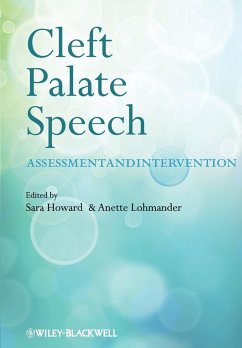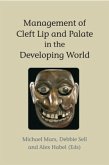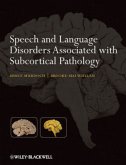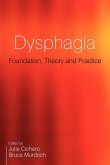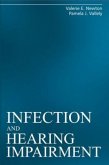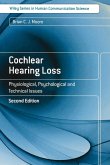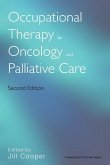Cleft Palate Speech
Herausgeber: Howard, Sara; Lohmander, Anette
Cleft Palate Speech
Herausgeber: Howard, Sara; Lohmander, Anette
- Broschiertes Buch
- Merkliste
- Auf die Merkliste
- Bewerten Bewerten
- Teilen
- Produkt teilen
- Produkterinnerung
- Produkterinnerung
The focus of this book is on speech production and speech processing associated with cleft palate, covering phonetic (perceptual and instrumental), phonological and psycholinguistic perspectives, and including coverage of implications for literacy and education, as well as cross-linguistic differences. It draws together a group of international experts in the fields of cleft lip and palate and speech science to provide an up-to-date and in-depth account of the nature of speech production, and the processes and current evidence base of assessment and intervention for speech associated with…mehr
Andere Kunden interessierten sich auch für
![Management of Cleft Lip and Palate in the Developing World Management of Cleft Lip and Palate in the Developing World]() Michael Mars / Alex Habel / Debbie Sell (eds.)Management of Cleft Lip and Palate in the Developing World87,99 €
Michael Mars / Alex Habel / Debbie Sell (eds.)Management of Cleft Lip and Palate in the Developing World87,99 €![Acquired Speech and Language Disorders Acquired Speech and Language Disorders]() Bruce E. MurdochAcquired Speech and Language Disorders78,99 €
Bruce E. MurdochAcquired Speech and Language Disorders78,99 €![Speech and Language Disorders Associated with Subcortical Pathology Speech and Language Disorders Associated with Subcortical Pathology]() Bruce E. MurdochSpeech and Language Disorders Associated with Subcortical Pathology77,99 €
Bruce E. MurdochSpeech and Language Disorders Associated with Subcortical Pathology77,99 €![Dysphagia Dysphagia]() Julie Cichero / Bruce Murdoch (Hgg.)Dysphagia140,99 €
Julie Cichero / Bruce Murdoch (Hgg.)Dysphagia140,99 €![Infection and Hearing Impairment Infection and Hearing Impairment]() Valerie Newton / Pamela Vallely (Hgg.)Infection and Hearing Impairment110,99 €
Valerie Newton / Pamela Vallely (Hgg.)Infection and Hearing Impairment110,99 €![Cochlear Hearing Loss 2e Cochlear Hearing Loss 2e]() Brian MooreCochlear Hearing Loss 2e131,99 €
Brian MooreCochlear Hearing Loss 2e131,99 €![Occupational Therapy in Oncology 2e Occupational Therapy in Oncology 2e]() Jill CooperOccupational Therapy in Oncology 2e99,99 €
Jill CooperOccupational Therapy in Oncology 2e99,99 €-
-
-
The focus of this book is on speech production and speech processing associated with cleft palate, covering phonetic (perceptual and instrumental), phonological and psycholinguistic perspectives, and including coverage of implications for literacy and education, as well as cross-linguistic differences. It draws together a group of international experts in the fields of cleft lip and palate and speech science to provide an up-to-date and in-depth account of the nature of speech production, and the processes and current evidence base of assessment and intervention for speech associated with cleft palate. The consequences of speech disorders associated with cleft on intelligibility and communicative participation are also covered. This book will provide a solid theoretical foundation and a valuable clinical resource for students of speech-language pathology, for practising speech-language pathologists, and for others interested in speech production in cleft palate, including researchers and members of multi-disciplinary cleft teams who wish to know more about the nature of speech difficulties associated with a cleft palate.
Produktdetails
- Produktdetails
- Verlag: John Wiley & Sons / Wiley
- Seitenzahl: 400
- Erscheinungstermin: 26. September 2011
- Englisch
- Abmessung: 244mm x 170mm x 21mm
- Gewicht: 675g
- ISBN-13: 9780470743300
- ISBN-10: 0470743301
- Artikelnr.: 33352493
- Herstellerkennzeichnung
- Libri GmbH
- Europaallee 1
- 36244 Bad Hersfeld
- gpsr@libri.de
- Verlag: John Wiley & Sons / Wiley
- Seitenzahl: 400
- Erscheinungstermin: 26. September 2011
- Englisch
- Abmessung: 244mm x 170mm x 21mm
- Gewicht: 675g
- ISBN-13: 9780470743300
- ISBN-10: 0470743301
- Artikelnr.: 33352493
- Herstellerkennzeichnung
- Libri GmbH
- Europaallee 1
- 36244 Bad Hersfeld
- gpsr@libri.de
Sara Howard is Reader in Clinical Phonetics,?University of Sheffield, UK. Anette Lohmander is Professor and Head of Division of Speech and Language Pathology, Department of Clinical Science, Intervention and Technique, Karolinska Institutet, Sweden.
List of Contributors xi
Preface xvii
Part One Speech Production and Development 1
Sara Howard and Anette Lohmander
1 Physical Structure and Function and Speech Production Associated with
Cleft Palate 5
Martin Atkinson and Sara Howard
1.1 Introduction 5
1.2 The Hard and Soft Palates and the Velopharynx 6
1.3 The Tonsils and Adenoids 9
1.4 The Larynx 11
1.5 The Jaws, Dentition and Occlusion 12
1.6 Symmetry: Structure and Function 15
1.7 The Tongue 16
1.8 The Lips 18
1.9 Summary: Compensations Across Systems 19
References 19
2 The Development of Speech in Children with Cleft Palate 23
Kathy L. Chapman and Elisabeth Willadsen
2.1 Overview 23
2.2 The Impact of Clefting on Speech Production 24
2.3 Variables Impacting Speech Development for Young Children with Cleft
Palate 25
2.4 Speech Development: Birth to Age Five 26
2.5 Conclusion 35
References 36
3 The Influence of Related Conditions on Speech and Communication 41
Christina Persson and Lotta Sjögreen
3.1 Introduction 41
3.2 Conditions Related to Structural Etiologies 42
3.3 Conditions Related to Neurological Aetiology 47
3.4 Conditions Related to a Combination of Structural and Neurological
Aetiology 49
3.5 Clinical Implications 50
References 50
4 Surgical Intervention and Speech Outcomes in Cleft Lip and Palate 55
Anette Lohmander
4.1 Introduction 55
4.2 Basics of Surgery on Cleft Palate 57
4.3 Basics of Outcomes 64
4.4 Speech Outcomes 65
4.5 Conclusion 69
Appendix 4.A Review of Evidence and Methodology in Studies of Speech
Outcome in Individuals Born with Cleft Lip and Palate 70
References 82
5 Secondary Management and Speech Outcome 87
John E. Riski
5.1 Introduction 87
5.2 Secondary Surgical Management of Velopharyngeal Incompetence 88
5.3 Secondary Pharyngeal Flap 88
5.4 Posterior Pharyngeal Wall Augmentation by Muscle Transposition 91
5.5 Studies Comparing Treatments of VPI 94
5.6 Posterior Pharyngeal Wall Augmentation by Implants and Injections 95
5.7 Velarplasty 96
5.8 Other Considerations in Managing VPI 97
5.9 Complications Secondary to Pharyngoplasties 99
5.10 Conclusions 99
References 100
6 Cleft Palate Speech in the Majority World: Models of Intervention and
Speech Outcomes in Diverse Cultural and Language Contexts 105
Debbie Sell, Roopa Nagarajan and Mary Wickenden
6.1 Introduction 105
6.2 Speech Outcomes in a Majority World Context 106
6.3 Different Models of Provision 109
6.4 Attitudes/Cultural Aspects 115
6.5 Conclusion 119
References 119
Part Two Speech Assessment and Intervention 123
Anette Lohmander and Sara Howard
7 Phonetic Transcription for Speech Related to Cleft Palate 127
Sara Howard
7.1 Introduction 127
7.2 What is Phonetic Transcription? 128
7.3 Why Transcribe? 129
7.4 What to Transcribe and How to Transcribe It 130
7.5 Features of Cleft Speech Production 131
7.6 Pitfalls of Transcription 134
7.7 Conclusion 138
Appendices 139
References 142
8 Instrumentation in the Analysis of the Structure and Function of the
Velopharyngeal Mechanism 145
Debbie Sell and Valerie Pereira
8.1 Introduction 145
8.2 Visualization of the Velopharyngeal Mechanism 147
8.3 Multiview Videofluoroscopy 147
8.4 Nasendoscopy Procedure 151
8.5 Magnetic Resonance Imaging (MRI) 155
8.6 Variability in Practice 158
8.7 Future 162
References 162
9 Cross Linguistic Perspectives on Speech Assessment in Cleft Palate 167
Gunilla Henningsson and Elisabeth Willadsen
9.1 Introduction 167
9.2 Vulnerable Speech Sounds 168
9.3 Language Background of the Listener Assessing the Speech of Children
with Cleft Palate 170
9.4 What Is Known about More Unfamiliar Languages? 173
9.5 Cross Linguistic Speech Samples 173
9.6 Influence on Assessment of Language Acquisition in the Young Child with
Cleft Palate 176
9.7 Conclusion 177
References 177
10 Voice Assessment and Intervention 181
Lesley Cavalli
10.1 Introduction 181
10.2 Defining a Voice Disorder 181
10.3 Assessment 184
10.4 Instrumental Assessment 189
10.5 Vocal Handicap Measures 190
10.6 Treatment 191
10.7 Conclusion 195
References 196
11 Nasality - Assessment and Intervention 199
Triona Sweeney
11.1 Introduction 199
11.2 Perceptual Assessment of Nasality and Nasal Airflow Errors 205
11.3 Instrumental Assessment of Nasality and Nasal Airflow Errors 207
11.4 Interpreting Results 211
11.5 Intervention 214
11.6 Conclusion 216
Appendix 11.A Temple Street Scale of Nasality and Nasal Airflow Errors 217
References 217
12 Articulation - Instruments for Research and Clinical Practice 221
Fiona E. Gibbon and Alice Lee
12.1 Introduction 221
12.2 Electropalatography (EPG) 222
12.3 Imaging Techniques 228
12.4 Motion Tracking 233
12.5 Conclusion 235
Acknowledgement 235
References 235
13 Psycholinguistic Assessment and Intervention 239
Joy Stackhouse
13.1 Introduction 239
13.2 What is a Psycholinguistic Approach? 240
13.3 A Psycholinguistic Assessment Framework 242
13.4 Intervention from a Psycholinguistic Perspective 245
13.5 Literacy: Phonological Awareness and Spelling 250
13.6 Summary 254
References 255
14 Early Communication Assessment and Intervention 259
Nancy Scherer and Brenda Louw
14.1 Introduction 259
14.2 Assessment 260
14.3 Intervention 267
References 272
15 Phonological Approaches to Speech Difficulties Associated with Cleft
Palate 275
Anne Harding-Bell and Sara Howard
15.1 Introduction 275
15.2 Variability, Variation and Compensation 277
15.3 Classification of Speech Difficulties Related to Cleft Palate 278
15.4 Phonological Assessment of Speech Data Related to Cleft Palate 278
15.5 Phonological Consequences of Speech Production Related to Cleft Palate
279
15.6 Intervention 283
15.7 Summary 287
References 288
16 Speech Intelligibility 293
Tara L. Whitehill, Carrie L. Gotzke and Megan Hodge
16.1 Introduction 293
16.2 Definition of Intelligibility and Related Concepts 294
16.3 Measurement Issues 294
16.4 Studies of Intelligibility in Speakers with Cleft Palate 296
16.5 Current and Future Developments 298
16.6 Conclusion 300
References 301
17 Communicative Participation 305
Christina Havstam and Anette Lohmander
17.1 Introduction 305
17.2 ICF 306
17.3 Communicative Participation 307
17.4 Conclusions and Clinical Implications 312
References 312
18 Evaluation and Evidence-Based Practice 317
Linda D. Vallino-Napoli
18.1 Introduction 317
18.2 Intervention for Speech Disorders 318
18.3 Evidence-Based Practice 319
18.4 The Systematic Review Process 323
18.5 Evidence Findings Establishing Therapy Effectiveness 325
18.6 Instrumentation - Visual Feedback 349
18.7 Surgery 350
18.8 Comments about Intervention Effectiveness 351
18.9 Intervention and the International Classification of Function (ICF)
352
18.10 Research Designs for Intervention Studies 352
18.11 Conclusions 352
Appendix 18.A Commonly Used Evidence Hierarchies for Intervention Studies
354
References 354
Index 359
Preface xvii
Part One Speech Production and Development 1
Sara Howard and Anette Lohmander
1 Physical Structure and Function and Speech Production Associated with
Cleft Palate 5
Martin Atkinson and Sara Howard
1.1 Introduction 5
1.2 The Hard and Soft Palates and the Velopharynx 6
1.3 The Tonsils and Adenoids 9
1.4 The Larynx 11
1.5 The Jaws, Dentition and Occlusion 12
1.6 Symmetry: Structure and Function 15
1.7 The Tongue 16
1.8 The Lips 18
1.9 Summary: Compensations Across Systems 19
References 19
2 The Development of Speech in Children with Cleft Palate 23
Kathy L. Chapman and Elisabeth Willadsen
2.1 Overview 23
2.2 The Impact of Clefting on Speech Production 24
2.3 Variables Impacting Speech Development for Young Children with Cleft
Palate 25
2.4 Speech Development: Birth to Age Five 26
2.5 Conclusion 35
References 36
3 The Influence of Related Conditions on Speech and Communication 41
Christina Persson and Lotta Sjögreen
3.1 Introduction 41
3.2 Conditions Related to Structural Etiologies 42
3.3 Conditions Related to Neurological Aetiology 47
3.4 Conditions Related to a Combination of Structural and Neurological
Aetiology 49
3.5 Clinical Implications 50
References 50
4 Surgical Intervention and Speech Outcomes in Cleft Lip and Palate 55
Anette Lohmander
4.1 Introduction 55
4.2 Basics of Surgery on Cleft Palate 57
4.3 Basics of Outcomes 64
4.4 Speech Outcomes 65
4.5 Conclusion 69
Appendix 4.A Review of Evidence and Methodology in Studies of Speech
Outcome in Individuals Born with Cleft Lip and Palate 70
References 82
5 Secondary Management and Speech Outcome 87
John E. Riski
5.1 Introduction 87
5.2 Secondary Surgical Management of Velopharyngeal Incompetence 88
5.3 Secondary Pharyngeal Flap 88
5.4 Posterior Pharyngeal Wall Augmentation by Muscle Transposition 91
5.5 Studies Comparing Treatments of VPI 94
5.6 Posterior Pharyngeal Wall Augmentation by Implants and Injections 95
5.7 Velarplasty 96
5.8 Other Considerations in Managing VPI 97
5.9 Complications Secondary to Pharyngoplasties 99
5.10 Conclusions 99
References 100
6 Cleft Palate Speech in the Majority World: Models of Intervention and
Speech Outcomes in Diverse Cultural and Language Contexts 105
Debbie Sell, Roopa Nagarajan and Mary Wickenden
6.1 Introduction 105
6.2 Speech Outcomes in a Majority World Context 106
6.3 Different Models of Provision 109
6.4 Attitudes/Cultural Aspects 115
6.5 Conclusion 119
References 119
Part Two Speech Assessment and Intervention 123
Anette Lohmander and Sara Howard
7 Phonetic Transcription for Speech Related to Cleft Palate 127
Sara Howard
7.1 Introduction 127
7.2 What is Phonetic Transcription? 128
7.3 Why Transcribe? 129
7.4 What to Transcribe and How to Transcribe It 130
7.5 Features of Cleft Speech Production 131
7.6 Pitfalls of Transcription 134
7.7 Conclusion 138
Appendices 139
References 142
8 Instrumentation in the Analysis of the Structure and Function of the
Velopharyngeal Mechanism 145
Debbie Sell and Valerie Pereira
8.1 Introduction 145
8.2 Visualization of the Velopharyngeal Mechanism 147
8.3 Multiview Videofluoroscopy 147
8.4 Nasendoscopy Procedure 151
8.5 Magnetic Resonance Imaging (MRI) 155
8.6 Variability in Practice 158
8.7 Future 162
References 162
9 Cross Linguistic Perspectives on Speech Assessment in Cleft Palate 167
Gunilla Henningsson and Elisabeth Willadsen
9.1 Introduction 167
9.2 Vulnerable Speech Sounds 168
9.3 Language Background of the Listener Assessing the Speech of Children
with Cleft Palate 170
9.4 What Is Known about More Unfamiliar Languages? 173
9.5 Cross Linguistic Speech Samples 173
9.6 Influence on Assessment of Language Acquisition in the Young Child with
Cleft Palate 176
9.7 Conclusion 177
References 177
10 Voice Assessment and Intervention 181
Lesley Cavalli
10.1 Introduction 181
10.2 Defining a Voice Disorder 181
10.3 Assessment 184
10.4 Instrumental Assessment 189
10.5 Vocal Handicap Measures 190
10.6 Treatment 191
10.7 Conclusion 195
References 196
11 Nasality - Assessment and Intervention 199
Triona Sweeney
11.1 Introduction 199
11.2 Perceptual Assessment of Nasality and Nasal Airflow Errors 205
11.3 Instrumental Assessment of Nasality and Nasal Airflow Errors 207
11.4 Interpreting Results 211
11.5 Intervention 214
11.6 Conclusion 216
Appendix 11.A Temple Street Scale of Nasality and Nasal Airflow Errors 217
References 217
12 Articulation - Instruments for Research and Clinical Practice 221
Fiona E. Gibbon and Alice Lee
12.1 Introduction 221
12.2 Electropalatography (EPG) 222
12.3 Imaging Techniques 228
12.4 Motion Tracking 233
12.5 Conclusion 235
Acknowledgement 235
References 235
13 Psycholinguistic Assessment and Intervention 239
Joy Stackhouse
13.1 Introduction 239
13.2 What is a Psycholinguistic Approach? 240
13.3 A Psycholinguistic Assessment Framework 242
13.4 Intervention from a Psycholinguistic Perspective 245
13.5 Literacy: Phonological Awareness and Spelling 250
13.6 Summary 254
References 255
14 Early Communication Assessment and Intervention 259
Nancy Scherer and Brenda Louw
14.1 Introduction 259
14.2 Assessment 260
14.3 Intervention 267
References 272
15 Phonological Approaches to Speech Difficulties Associated with Cleft
Palate 275
Anne Harding-Bell and Sara Howard
15.1 Introduction 275
15.2 Variability, Variation and Compensation 277
15.3 Classification of Speech Difficulties Related to Cleft Palate 278
15.4 Phonological Assessment of Speech Data Related to Cleft Palate 278
15.5 Phonological Consequences of Speech Production Related to Cleft Palate
279
15.6 Intervention 283
15.7 Summary 287
References 288
16 Speech Intelligibility 293
Tara L. Whitehill, Carrie L. Gotzke and Megan Hodge
16.1 Introduction 293
16.2 Definition of Intelligibility and Related Concepts 294
16.3 Measurement Issues 294
16.4 Studies of Intelligibility in Speakers with Cleft Palate 296
16.5 Current and Future Developments 298
16.6 Conclusion 300
References 301
17 Communicative Participation 305
Christina Havstam and Anette Lohmander
17.1 Introduction 305
17.2 ICF 306
17.3 Communicative Participation 307
17.4 Conclusions and Clinical Implications 312
References 312
18 Evaluation and Evidence-Based Practice 317
Linda D. Vallino-Napoli
18.1 Introduction 317
18.2 Intervention for Speech Disorders 318
18.3 Evidence-Based Practice 319
18.4 The Systematic Review Process 323
18.5 Evidence Findings Establishing Therapy Effectiveness 325
18.6 Instrumentation - Visual Feedback 349
18.7 Surgery 350
18.8 Comments about Intervention Effectiveness 351
18.9 Intervention and the International Classification of Function (ICF)
352
18.10 Research Designs for Intervention Studies 352
18.11 Conclusions 352
Appendix 18.A Commonly Used Evidence Hierarchies for Intervention Studies
354
References 354
Index 359
List of Contributors xi
Preface xvii
Part One Speech Production and Development 1
Sara Howard and Anette Lohmander
1 Physical Structure and Function and Speech Production Associated with
Cleft Palate 5
Martin Atkinson and Sara Howard
1.1 Introduction 5
1.2 The Hard and Soft Palates and the Velopharynx 6
1.3 The Tonsils and Adenoids 9
1.4 The Larynx 11
1.5 The Jaws, Dentition and Occlusion 12
1.6 Symmetry: Structure and Function 15
1.7 The Tongue 16
1.8 The Lips 18
1.9 Summary: Compensations Across Systems 19
References 19
2 The Development of Speech in Children with Cleft Palate 23
Kathy L. Chapman and Elisabeth Willadsen
2.1 Overview 23
2.2 The Impact of Clefting on Speech Production 24
2.3 Variables Impacting Speech Development for Young Children with Cleft
Palate 25
2.4 Speech Development: Birth to Age Five 26
2.5 Conclusion 35
References 36
3 The Influence of Related Conditions on Speech and Communication 41
Christina Persson and Lotta Sjögreen
3.1 Introduction 41
3.2 Conditions Related to Structural Etiologies 42
3.3 Conditions Related to Neurological Aetiology 47
3.4 Conditions Related to a Combination of Structural and Neurological
Aetiology 49
3.5 Clinical Implications 50
References 50
4 Surgical Intervention and Speech Outcomes in Cleft Lip and Palate 55
Anette Lohmander
4.1 Introduction 55
4.2 Basics of Surgery on Cleft Palate 57
4.3 Basics of Outcomes 64
4.4 Speech Outcomes 65
4.5 Conclusion 69
Appendix 4.A Review of Evidence and Methodology in Studies of Speech
Outcome in Individuals Born with Cleft Lip and Palate 70
References 82
5 Secondary Management and Speech Outcome 87
John E. Riski
5.1 Introduction 87
5.2 Secondary Surgical Management of Velopharyngeal Incompetence 88
5.3 Secondary Pharyngeal Flap 88
5.4 Posterior Pharyngeal Wall Augmentation by Muscle Transposition 91
5.5 Studies Comparing Treatments of VPI 94
5.6 Posterior Pharyngeal Wall Augmentation by Implants and Injections 95
5.7 Velarplasty 96
5.8 Other Considerations in Managing VPI 97
5.9 Complications Secondary to Pharyngoplasties 99
5.10 Conclusions 99
References 100
6 Cleft Palate Speech in the Majority World: Models of Intervention and
Speech Outcomes in Diverse Cultural and Language Contexts 105
Debbie Sell, Roopa Nagarajan and Mary Wickenden
6.1 Introduction 105
6.2 Speech Outcomes in a Majority World Context 106
6.3 Different Models of Provision 109
6.4 Attitudes/Cultural Aspects 115
6.5 Conclusion 119
References 119
Part Two Speech Assessment and Intervention 123
Anette Lohmander and Sara Howard
7 Phonetic Transcription for Speech Related to Cleft Palate 127
Sara Howard
7.1 Introduction 127
7.2 What is Phonetic Transcription? 128
7.3 Why Transcribe? 129
7.4 What to Transcribe and How to Transcribe It 130
7.5 Features of Cleft Speech Production 131
7.6 Pitfalls of Transcription 134
7.7 Conclusion 138
Appendices 139
References 142
8 Instrumentation in the Analysis of the Structure and Function of the
Velopharyngeal Mechanism 145
Debbie Sell and Valerie Pereira
8.1 Introduction 145
8.2 Visualization of the Velopharyngeal Mechanism 147
8.3 Multiview Videofluoroscopy 147
8.4 Nasendoscopy Procedure 151
8.5 Magnetic Resonance Imaging (MRI) 155
8.6 Variability in Practice 158
8.7 Future 162
References 162
9 Cross Linguistic Perspectives on Speech Assessment in Cleft Palate 167
Gunilla Henningsson and Elisabeth Willadsen
9.1 Introduction 167
9.2 Vulnerable Speech Sounds 168
9.3 Language Background of the Listener Assessing the Speech of Children
with Cleft Palate 170
9.4 What Is Known about More Unfamiliar Languages? 173
9.5 Cross Linguistic Speech Samples 173
9.6 Influence on Assessment of Language Acquisition in the Young Child with
Cleft Palate 176
9.7 Conclusion 177
References 177
10 Voice Assessment and Intervention 181
Lesley Cavalli
10.1 Introduction 181
10.2 Defining a Voice Disorder 181
10.3 Assessment 184
10.4 Instrumental Assessment 189
10.5 Vocal Handicap Measures 190
10.6 Treatment 191
10.7 Conclusion 195
References 196
11 Nasality - Assessment and Intervention 199
Triona Sweeney
11.1 Introduction 199
11.2 Perceptual Assessment of Nasality and Nasal Airflow Errors 205
11.3 Instrumental Assessment of Nasality and Nasal Airflow Errors 207
11.4 Interpreting Results 211
11.5 Intervention 214
11.6 Conclusion 216
Appendix 11.A Temple Street Scale of Nasality and Nasal Airflow Errors 217
References 217
12 Articulation - Instruments for Research and Clinical Practice 221
Fiona E. Gibbon and Alice Lee
12.1 Introduction 221
12.2 Electropalatography (EPG) 222
12.3 Imaging Techniques 228
12.4 Motion Tracking 233
12.5 Conclusion 235
Acknowledgement 235
References 235
13 Psycholinguistic Assessment and Intervention 239
Joy Stackhouse
13.1 Introduction 239
13.2 What is a Psycholinguistic Approach? 240
13.3 A Psycholinguistic Assessment Framework 242
13.4 Intervention from a Psycholinguistic Perspective 245
13.5 Literacy: Phonological Awareness and Spelling 250
13.6 Summary 254
References 255
14 Early Communication Assessment and Intervention 259
Nancy Scherer and Brenda Louw
14.1 Introduction 259
14.2 Assessment 260
14.3 Intervention 267
References 272
15 Phonological Approaches to Speech Difficulties Associated with Cleft
Palate 275
Anne Harding-Bell and Sara Howard
15.1 Introduction 275
15.2 Variability, Variation and Compensation 277
15.3 Classification of Speech Difficulties Related to Cleft Palate 278
15.4 Phonological Assessment of Speech Data Related to Cleft Palate 278
15.5 Phonological Consequences of Speech Production Related to Cleft Palate
279
15.6 Intervention 283
15.7 Summary 287
References 288
16 Speech Intelligibility 293
Tara L. Whitehill, Carrie L. Gotzke and Megan Hodge
16.1 Introduction 293
16.2 Definition of Intelligibility and Related Concepts 294
16.3 Measurement Issues 294
16.4 Studies of Intelligibility in Speakers with Cleft Palate 296
16.5 Current and Future Developments 298
16.6 Conclusion 300
References 301
17 Communicative Participation 305
Christina Havstam and Anette Lohmander
17.1 Introduction 305
17.2 ICF 306
17.3 Communicative Participation 307
17.4 Conclusions and Clinical Implications 312
References 312
18 Evaluation and Evidence-Based Practice 317
Linda D. Vallino-Napoli
18.1 Introduction 317
18.2 Intervention for Speech Disorders 318
18.3 Evidence-Based Practice 319
18.4 The Systematic Review Process 323
18.5 Evidence Findings Establishing Therapy Effectiveness 325
18.6 Instrumentation - Visual Feedback 349
18.7 Surgery 350
18.8 Comments about Intervention Effectiveness 351
18.9 Intervention and the International Classification of Function (ICF)
352
18.10 Research Designs for Intervention Studies 352
18.11 Conclusions 352
Appendix 18.A Commonly Used Evidence Hierarchies for Intervention Studies
354
References 354
Index 359
Preface xvii
Part One Speech Production and Development 1
Sara Howard and Anette Lohmander
1 Physical Structure and Function and Speech Production Associated with
Cleft Palate 5
Martin Atkinson and Sara Howard
1.1 Introduction 5
1.2 The Hard and Soft Palates and the Velopharynx 6
1.3 The Tonsils and Adenoids 9
1.4 The Larynx 11
1.5 The Jaws, Dentition and Occlusion 12
1.6 Symmetry: Structure and Function 15
1.7 The Tongue 16
1.8 The Lips 18
1.9 Summary: Compensations Across Systems 19
References 19
2 The Development of Speech in Children with Cleft Palate 23
Kathy L. Chapman and Elisabeth Willadsen
2.1 Overview 23
2.2 The Impact of Clefting on Speech Production 24
2.3 Variables Impacting Speech Development for Young Children with Cleft
Palate 25
2.4 Speech Development: Birth to Age Five 26
2.5 Conclusion 35
References 36
3 The Influence of Related Conditions on Speech and Communication 41
Christina Persson and Lotta Sjögreen
3.1 Introduction 41
3.2 Conditions Related to Structural Etiologies 42
3.3 Conditions Related to Neurological Aetiology 47
3.4 Conditions Related to a Combination of Structural and Neurological
Aetiology 49
3.5 Clinical Implications 50
References 50
4 Surgical Intervention and Speech Outcomes in Cleft Lip and Palate 55
Anette Lohmander
4.1 Introduction 55
4.2 Basics of Surgery on Cleft Palate 57
4.3 Basics of Outcomes 64
4.4 Speech Outcomes 65
4.5 Conclusion 69
Appendix 4.A Review of Evidence and Methodology in Studies of Speech
Outcome in Individuals Born with Cleft Lip and Palate 70
References 82
5 Secondary Management and Speech Outcome 87
John E. Riski
5.1 Introduction 87
5.2 Secondary Surgical Management of Velopharyngeal Incompetence 88
5.3 Secondary Pharyngeal Flap 88
5.4 Posterior Pharyngeal Wall Augmentation by Muscle Transposition 91
5.5 Studies Comparing Treatments of VPI 94
5.6 Posterior Pharyngeal Wall Augmentation by Implants and Injections 95
5.7 Velarplasty 96
5.8 Other Considerations in Managing VPI 97
5.9 Complications Secondary to Pharyngoplasties 99
5.10 Conclusions 99
References 100
6 Cleft Palate Speech in the Majority World: Models of Intervention and
Speech Outcomes in Diverse Cultural and Language Contexts 105
Debbie Sell, Roopa Nagarajan and Mary Wickenden
6.1 Introduction 105
6.2 Speech Outcomes in a Majority World Context 106
6.3 Different Models of Provision 109
6.4 Attitudes/Cultural Aspects 115
6.5 Conclusion 119
References 119
Part Two Speech Assessment and Intervention 123
Anette Lohmander and Sara Howard
7 Phonetic Transcription for Speech Related to Cleft Palate 127
Sara Howard
7.1 Introduction 127
7.2 What is Phonetic Transcription? 128
7.3 Why Transcribe? 129
7.4 What to Transcribe and How to Transcribe It 130
7.5 Features of Cleft Speech Production 131
7.6 Pitfalls of Transcription 134
7.7 Conclusion 138
Appendices 139
References 142
8 Instrumentation in the Analysis of the Structure and Function of the
Velopharyngeal Mechanism 145
Debbie Sell and Valerie Pereira
8.1 Introduction 145
8.2 Visualization of the Velopharyngeal Mechanism 147
8.3 Multiview Videofluoroscopy 147
8.4 Nasendoscopy Procedure 151
8.5 Magnetic Resonance Imaging (MRI) 155
8.6 Variability in Practice 158
8.7 Future 162
References 162
9 Cross Linguistic Perspectives on Speech Assessment in Cleft Palate 167
Gunilla Henningsson and Elisabeth Willadsen
9.1 Introduction 167
9.2 Vulnerable Speech Sounds 168
9.3 Language Background of the Listener Assessing the Speech of Children
with Cleft Palate 170
9.4 What Is Known about More Unfamiliar Languages? 173
9.5 Cross Linguistic Speech Samples 173
9.6 Influence on Assessment of Language Acquisition in the Young Child with
Cleft Palate 176
9.7 Conclusion 177
References 177
10 Voice Assessment and Intervention 181
Lesley Cavalli
10.1 Introduction 181
10.2 Defining a Voice Disorder 181
10.3 Assessment 184
10.4 Instrumental Assessment 189
10.5 Vocal Handicap Measures 190
10.6 Treatment 191
10.7 Conclusion 195
References 196
11 Nasality - Assessment and Intervention 199
Triona Sweeney
11.1 Introduction 199
11.2 Perceptual Assessment of Nasality and Nasal Airflow Errors 205
11.3 Instrumental Assessment of Nasality and Nasal Airflow Errors 207
11.4 Interpreting Results 211
11.5 Intervention 214
11.6 Conclusion 216
Appendix 11.A Temple Street Scale of Nasality and Nasal Airflow Errors 217
References 217
12 Articulation - Instruments for Research and Clinical Practice 221
Fiona E. Gibbon and Alice Lee
12.1 Introduction 221
12.2 Electropalatography (EPG) 222
12.3 Imaging Techniques 228
12.4 Motion Tracking 233
12.5 Conclusion 235
Acknowledgement 235
References 235
13 Psycholinguistic Assessment and Intervention 239
Joy Stackhouse
13.1 Introduction 239
13.2 What is a Psycholinguistic Approach? 240
13.3 A Psycholinguistic Assessment Framework 242
13.4 Intervention from a Psycholinguistic Perspective 245
13.5 Literacy: Phonological Awareness and Spelling 250
13.6 Summary 254
References 255
14 Early Communication Assessment and Intervention 259
Nancy Scherer and Brenda Louw
14.1 Introduction 259
14.2 Assessment 260
14.3 Intervention 267
References 272
15 Phonological Approaches to Speech Difficulties Associated with Cleft
Palate 275
Anne Harding-Bell and Sara Howard
15.1 Introduction 275
15.2 Variability, Variation and Compensation 277
15.3 Classification of Speech Difficulties Related to Cleft Palate 278
15.4 Phonological Assessment of Speech Data Related to Cleft Palate 278
15.5 Phonological Consequences of Speech Production Related to Cleft Palate
279
15.6 Intervention 283
15.7 Summary 287
References 288
16 Speech Intelligibility 293
Tara L. Whitehill, Carrie L. Gotzke and Megan Hodge
16.1 Introduction 293
16.2 Definition of Intelligibility and Related Concepts 294
16.3 Measurement Issues 294
16.4 Studies of Intelligibility in Speakers with Cleft Palate 296
16.5 Current and Future Developments 298
16.6 Conclusion 300
References 301
17 Communicative Participation 305
Christina Havstam and Anette Lohmander
17.1 Introduction 305
17.2 ICF 306
17.3 Communicative Participation 307
17.4 Conclusions and Clinical Implications 312
References 312
18 Evaluation and Evidence-Based Practice 317
Linda D. Vallino-Napoli
18.1 Introduction 317
18.2 Intervention for Speech Disorders 318
18.3 Evidence-Based Practice 319
18.4 The Systematic Review Process 323
18.5 Evidence Findings Establishing Therapy Effectiveness 325
18.6 Instrumentation - Visual Feedback 349
18.7 Surgery 350
18.8 Comments about Intervention Effectiveness 351
18.9 Intervention and the International Classification of Function (ICF)
352
18.10 Research Designs for Intervention Studies 352
18.11 Conclusions 352
Appendix 18.A Commonly Used Evidence Hierarchies for Intervention Studies
354
References 354
Index 359

